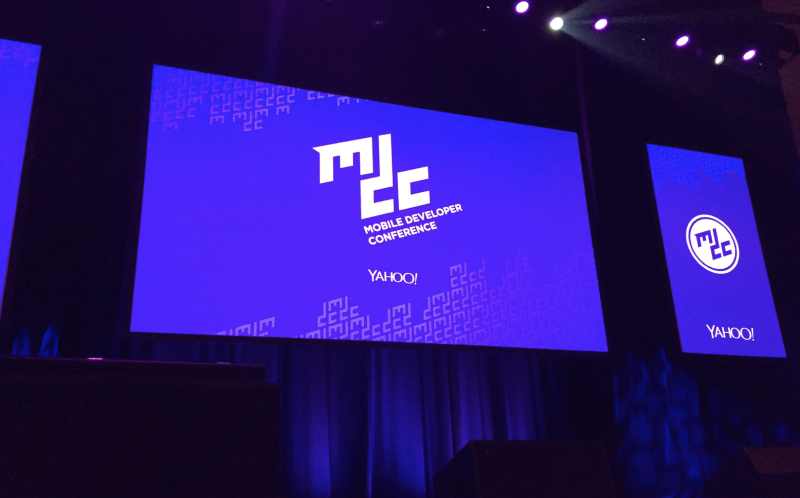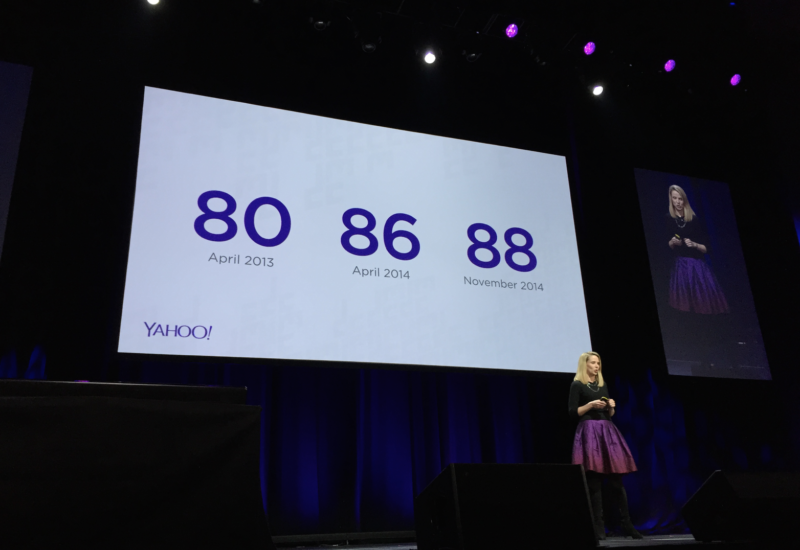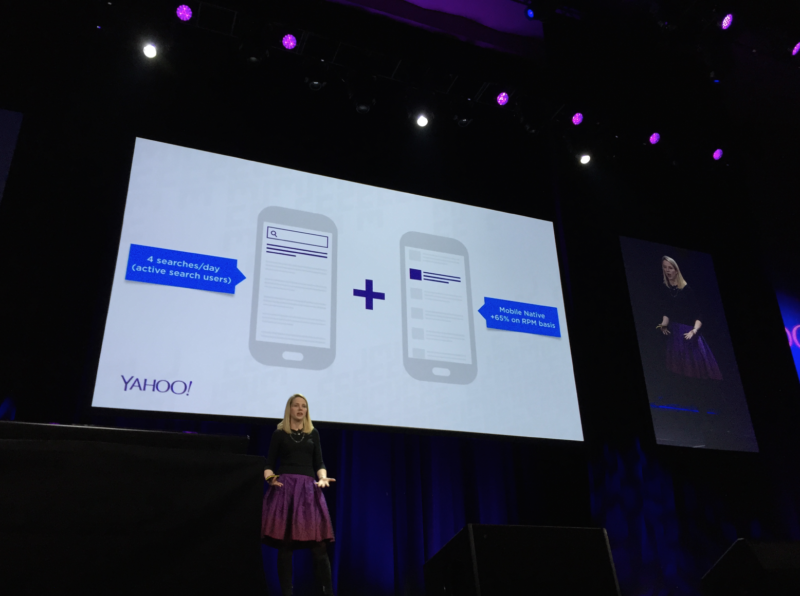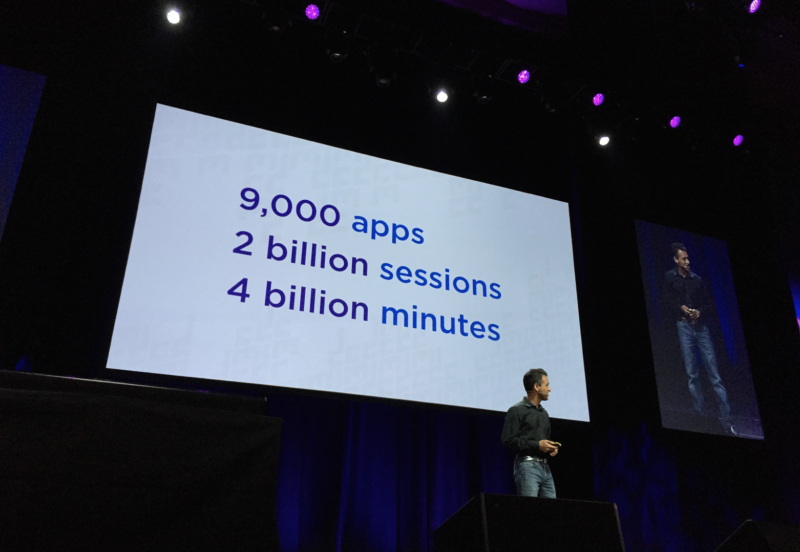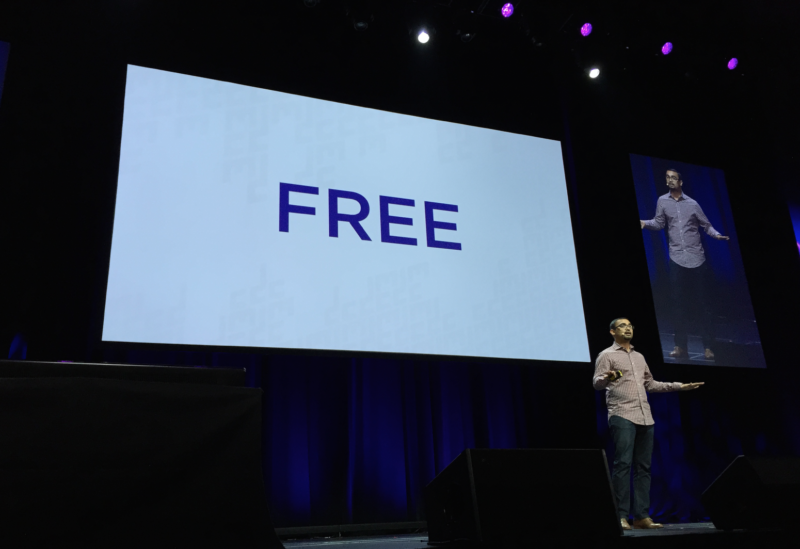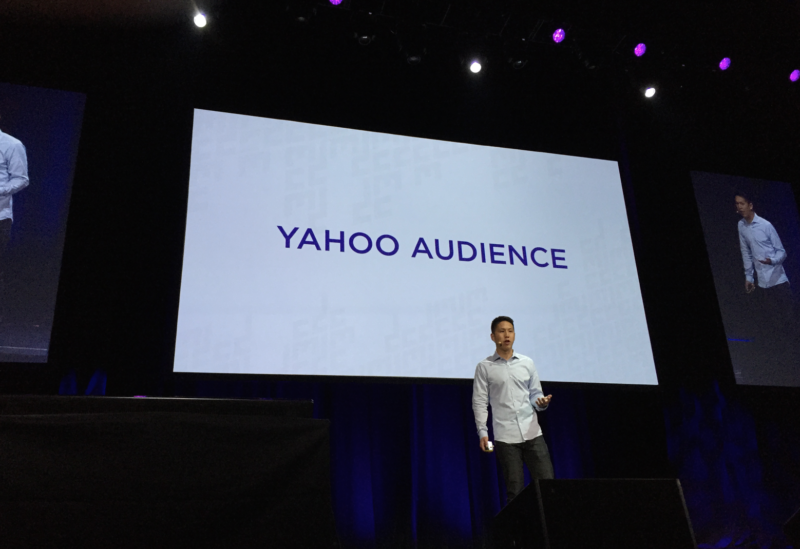Yahoo’s First Mobile Developer Conference Showcases Flurry, Mobile Developer Suite
Yahoo held its first mobile developer conference in San Francisco today. The following is an earlier live blog of the keynote portion of that event. Flurry’s Jarah Euston is first up on stage introducing its new parent’s first mobile developer event. She says that there are roughly 1,000 developers in the audience. She gives the audience […]
Yahoo held its first mobile developer conference in San Francisco today. The following is an earlier live blog of the keynote portion of that event.
Flurry’s Jarah Euston is first up on stage introducing its new parent’s first mobile developer event. She says that there are roughly 1,000 developers in the audience.
She gives the audience a high-level bit of background on Flurry. The company was founded as a mail app for flip phones in 2005. Flurry Analytics was introduced in 2008 (post iPhone). She then explains the agenda for the remainder of the day. At the end, she announces a new “mobile developer suite” but doesn’t elaborate. That will be explained later.
Euston then introduces Yahoo CEO Marissa Mayer. Mayer says she’s going to “start with a few numbers.” She cites now familiar mobile time-spent data: 88 percent of mobile time spent in apps; 177 minutes spent in apps daily; 2.2 billion hours spent in apps in January.
Mayer says Yahoo has reinvented its entire business, “with a mobile focus.” She emphasizes the company’s desire to support and help mobile developers.
According to Mayer, Yahoo now has 500 people (up from 50 two years ago) working on making Yahoo a “mobile first” company. She says that Yahoo and all its products are being “re-imagined for the smartphone.” She says that Yahoo’s transition to a mobile first company is the accomplishment she’s most proud of so far in her tenure as CEO.
Yahoo’s mobile growth is outpacing the industry she says and it’s a primary driver of Yahoo’s overall growth. Mayer adds that Yahoo is now the third largest mobile ad company in the world, with mobile revenues of $1.2 billion in 2014. Flurry is largely responsible for that.
Gemini has also been a big driver of growth for the company. Mayer says Gemini is one year old today. She’s promoting the virtues of Gemini (search + native ads). She says that Gemini has driven more search frequency and native revenue and ad engagement.
Mayer discusses Flurry’s scale and the benefits for Yahoo. But she says she also wants to bring Yahoo’s size scale to help developers make more money. BrightRoll, Gemini and Yahoo search will be made available to Yahoo-Flurry developers.
Mayer wasn’t on for more than about 10 – 12 minutes. Now Flurry CEO Simon Khalaf has taken the stage and is talking about the growth of apps and mobile usage. He’s very animated and repeats the time-spent metrics: 88 percent of time spent in apps, 12 percent in the browser.
Yet he points out that most of the recent app-growth is happening in the “mid to long tail.”
He says that just as email is the “killer app” for the PC, messaging has become the killer app for mobile. He says that messaging apps are the new platforms that rival mobile carriers.
Khalaf moves on and talks about tablets. He’s very bullish on tablets and cites data showing that teens are using tablets as PC substitutes. What follows is slide after slide about the size and scale of mobile.
He discusses how, if mobile were a country, it would have the 5th largest GDP in the world. He also says that the mobile industry created more jobs than any other country except China in 2014.
For the first time a medium (mobile) has eclipsed TV as the screen with the most time spent. Mobile gaming on iOS devices generates more revenue than the entire US movie box office.
Yahoo SVP Prashant Fuloria (previously of Flurry) is now on stage discussing the history of the Yahoo – Flurry relationship. “Today is about the future of Yahoo as a mobile platform.”
He describes Yahoo as “an iconic internet company now growing like a startup.” He then moves into a pitch to developers in the room to work with Yahoo-Flurry as an analytics and monetization platform.
Fuloria says that Yahoo has unparalleled insights into users (from search, mail, tumblr). He repeats the announcement of the new Mobile Developer Suite that was mentioned at the beginning of the session.
This new developer suite represents the “best of Yahoo and the best of Flurry” in one collection of tools and services. Fuloria unpacks each of the products:
- Flurry analytics and explorer (app analytics; explorer is a data analysis tool)
- Flurry pulse (send and share data with any partner in partnership with comScore)
- Yahoo app publishing (native, video and other ad sources for monetization)
- Yahoo search in apps (better search and search monitization in apps)
- Yahoo app marketing
Now each of the product leads for these tools and services come up to explain them and their benefits in more detail. These presentations are developer-centric (“fewer lines of code,” “fewer SDKs”). So far the products are free at any level of usage.
James Kelm is now up to discuss app monetization. He announces that Gemini native ads and BrightRoll video ads available to mobile developers through the Flurry SDK. This greatly extends the reach of Gemini and presumably BrightRoll video advertising.
Through Flurry, Yahoo now has access to 1.6 billion devices. He says that Flurry sees one-third of all app sessions globally.
Now Jon Paris is up to discuss Yahoo search in apps. By adding search users will stay within apps he says. Improving the user experience, Yahoo will also deliver search ads along with results.
Yahoo has incorporated search across its own apps. Paris argues that developers in the room can and should do this too.
Paris also explains that (Android) launchers are an “incredible opportunity” to improve the experience of Android. Many launchers have incorporated the Yahoo search SDK. He’s also pitching search on the lock screen. “We’ve made it dead simple” to incorporate search into apps and onto the home and lock screens (for Android).
The final speaker, Deng-Kai Chen, is up to talk about app marketing. He says that the app marketing ecosystem is fragmented, and it’s difficult to find users efficiently and at scale (what about Facebook?). Yahoo has 575 million monthly active app users. He pitches Gemini ads (and personalization) as the way to drive qualified downloads — via three channels: native, video and social.
Prashant Fuloria returns to close out the session and express to developers that Yahoo wants to be “your platform and your partner.”
Contributing authors are invited to create content for MarTech and are chosen for their expertise and contribution to the martech community. Our contributors work under the oversight of the editorial staff and contributions are checked for quality and relevance to our readers. The opinions they express are their own.
Related stories
New on MarTech
